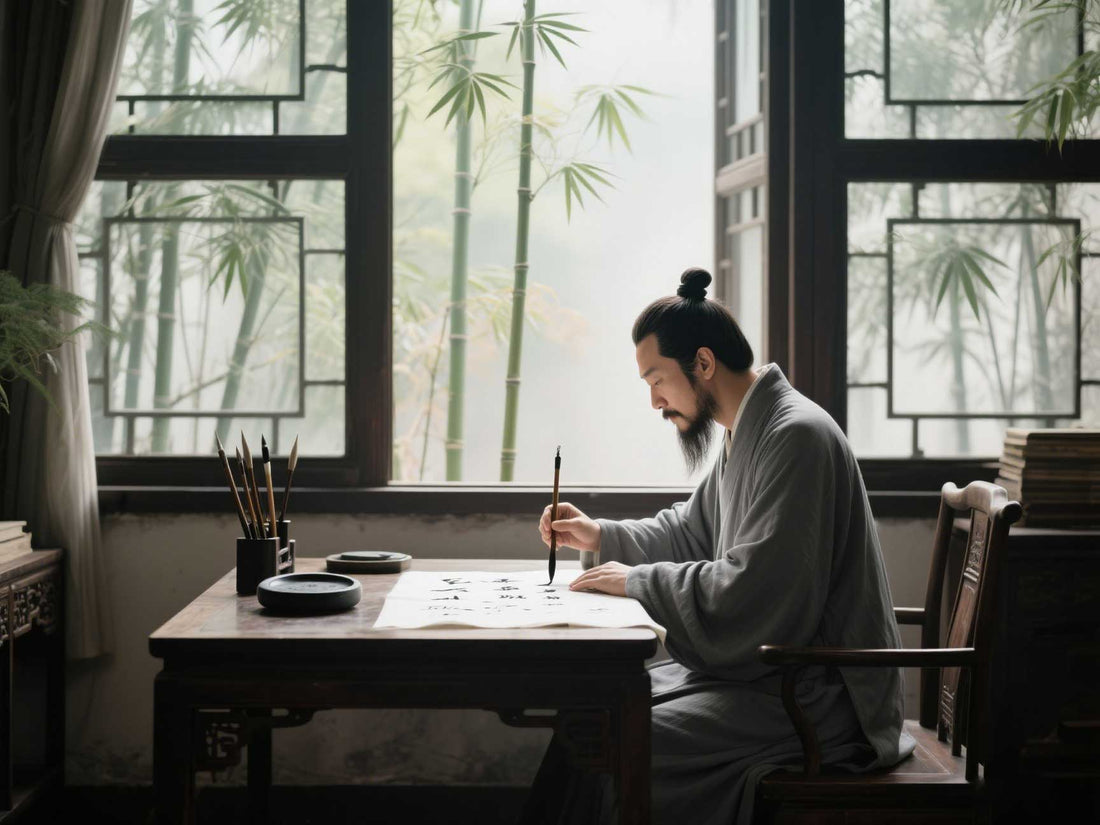
Key issues and solutions for calligraphers in their advanced stages
Share
1. Beginner stage (foundation period of technique)
-
The priority of selecting and copying ancient calligraphy
- It is necessary to take classic inscriptions and calligraphy as the foundation (such as "Lanting Preface" and "Jiucheng Palace"), and avoid being disturbed by contemporary popular calligraphy styles. It is easier for beginners to get started by choosing models that match their own aesthetics.
- Copying must go in depth from "copying from the face" to "copying from memory", and one should avoid "replacing the ancient with the present" or "copying all the calligraphy works without being proficient in any of them".
-
Standardization of basic techniques
- Focus on mastering core skills such as pen holding posture, lifting and pressing rhythm, and writing with the center of the pen. Seal, clerical and regular scripts can enhance the texture of lines and structural stability.
- Practicing large characters takes precedence over small characters, which helps to develop wrist strength and observe the strokes carefully.
2. Intermediate stage (creative transformation period)
-
The dynamic balance between creation and imitation
- Copying needs to shift from "similarity in form" to "copying in meaning", extract the spirit of the model, and gradually try to create a collection of characters to avoid the disconnection between "hand and mind".
- The creation of cursive script requires attention to the rhythm of the strokes and the layout of the composition. Those with a weak foundation in regular script are prone to fall into the dilemma of "sloppy and excessive writing".
-
Theory and practice complement each other
- Strengthen the study of calligraphy history and aesthetic theory, and understand the artistic logic behind the techniques (such as Zhao Mengfu's theory of the essence of brushwork that "the use of brushwork has remained unchanged throughout the ages").
- Broaden your horizons through exchanges and exhibitions, and get rid of the aesthetic rigidity caused by "working in isolation".
3. Advanced level (style condensation period)
-
Breaking through habits and expressing individuality
- Be wary of "skilled repetition" and regularly return to classic inscriptions and calligraphy to compare and reflect, in order to prevent the formation of mediocre calligraphy style due to the solidification of techniques.
- Combining the spirit of epigraphy with the charm of calligraphy (such as Sha Menghai's path of "studying both epigraphy and calligraphy"), exploring personal language within the traditional framework.
-
Upgrading creative awareness
- Strengthen the overall layout design, shifting from the exquisiteness of single words to the coherence of the entire text, avoiding the mechanical feeling of "collecting words and pasting them together".
- Emotional expression needs to be deeply integrated with technical techniques. For example, Yan Zhenqing's "Sacrificial Essay for My Nephew" transforms grief into the tension of brush and ink.
4. Master Stage (Cultural Awareness Stage)
- Maintaining the boundaries of integrity and innovation <br>To avoid falling into the extreme of "change for the sake of change", changes must be made based on traditional genes, such as Yu Youren's "Standard Cursive Script" which takes into account both standardization and artistry.
- Construction of artistic philosophy <br>Sublimating from the technical level to cultural expression, calligraphy is examined in the macro perspective of the evolution of Chinese characters and philosophical thinking.
Principles of commonality across stages
| Dimensions | Key Points | Risk Warning |
|---|---|---|
| Lin Gu | Always maintain the ability to reinterpret classic inscriptions and calligraphy | Breaking away from tradition can easily lead to "wild fox Zen" |
| Mindset | Long-termism rather than quick speculation | The desire for quick success and instant benefits has led to the proliferation of "jianghu style" |
| tool | The pen, ink, paper and inkstone are deeply adapted to the characteristics of the calligraphy style. | Unsuitable tools limit expressiveness |
The advancement of calligraphy is actually a spiral upward process of "skill-art-Tao". Each stage requires targeted breakthroughs in bottlenecks, and ultimately achieves the triple transcendence of sophisticated techniques, independent style and cultural awareness.
